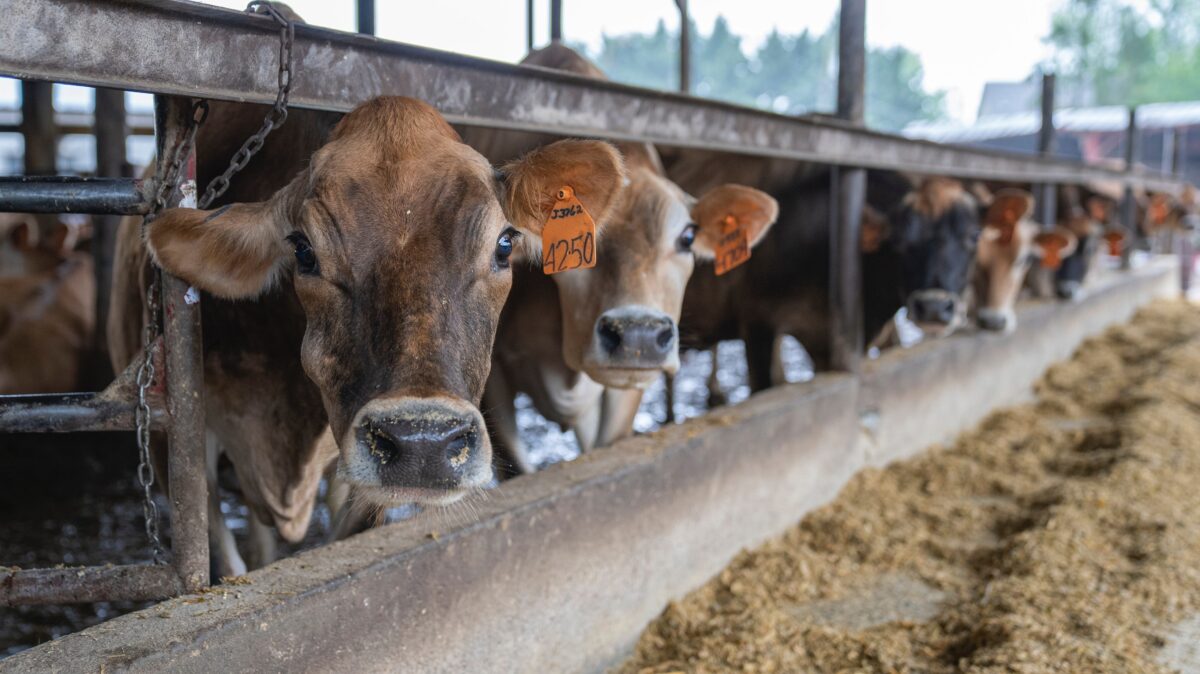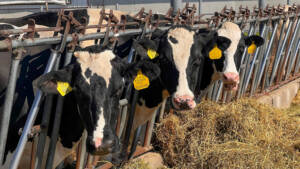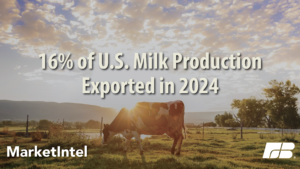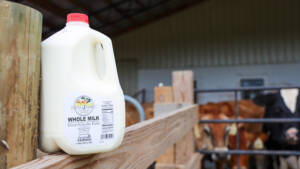American Farm Bureau Federation Chief Economist Roger Cryan presented the testimony below recently on behalf of AFBF and its membership at the ongoing Federal Milk Marketing Order Pricing Formula hearing, which has resumed after a six-week recess.
AFBF testimony underscores the need for updating Class I and Class II price differentials to bring fairness for farmers back into Federal Milk Marketing Orders. Class I differentials are meant to incentivize movement of milk to where it is demanded and assist in maintaining regional production capacity in a manner the provides consumers reliable access to fresh fluid milk.
The Class II differential is meant to represent the higher value of Class II milk, which is used in dairy products like ice cream, cottage cheese and sour cream, compared to Class IV milk, which is used in butter and dairy powders. Historically this has been based on the cost of drying and rewetting Class IV milk, though cost and processing dynamics have changed. For a full explanation of differentials used in Federal Milk Marketing Orders read Market Intel.
Below are excerpts from the testimony, which can be read in full here.
A fundamental focus of AFBF’s proposals is the reduction or elimination of negative producer price differentials and the de-pooling they cause. We believe that an orderly pool is the key to orderly marketing and ensuring Federal Milk Marketing Orders continue to benefit farmers, cooperatives, processors, and consumers. The key to an orderly pool, in turn, is, above all, the proper alignment of the four Class prices.
AFBF generally supports National Milk Producers Federation (NMPF) Proposal 19, which would increase Class I differentials across the country, and entirely opposes the Milk Innovation Group’s (MIG) proposal 20, to reduce the current base Class I differential from $1.60 to $0.00.
Proposal 21. The American Farm Bureau Federation proposes to update the Class II differential based on current drying costs.
The Class II differential was developed during order reform to reflect the cost of drying and rewetting milk, to reflect the higher value of Class II milk without incenting processors to dry and rewet (Class IV) milk for Class II uses. AFBF accepts this logic and proposes to update the Class II differential to $1.56.
This proposal is fundamentally a matter of fairness. If the costs of processing are to be recognized – and increased in this proceeding – for processors of Class IV milk, so should it be recognized in defining the Class II differential. This is an area where what is good for processors can provide some silver lining for producers. Much of Class II use was only separated from Class I because of the potential for substitution of Class IV nonfat dry milk for Class II skim milk. Setting the Class II differential at the make allowance for Class IV skim milk is the only fair way to apply the existing logic of Class II pricing.
Additional testimony on the issue of Class I differentials is as follows:
AFBF agrees with NMPF that Class I prices need to be updated. Over-order prices are ‘ephemeral’ and regulated Class I prices are more ‘durable.’ In effect, the ebbs and flows of local and regional market conditions can wash away a sound long-term price relationship, which may be hard to re-establish.
Federal Milk Marketing Orders, from their earliest days, recognized that short-term events and market conditions could lead to the destruction of long-term supply and demand stability. Farm policy is broadly aimed at providing some certainty and stability for farmers in the face of natural extreme volatility.
The current Class I differentials are largely based on a 1998 analysis of the current supply and demand volumes, and plant locations. Even those differentials updated for Southeastern markets in 2008 were only partially reflective of the conditions at that time, because they had to remain aligned with the rest of the country, where differentials remained unchanged.
NMPF’s proposed increases are quite moderate, perhaps too moderate.
The Class I differential consists of two parts: 1) a minimum element, reflecting the minimum additional Class I value necessary to provide a hundredweight of Grade A milk to the fluid market; and 2) a location-specific value over and above this, reflecting the relative difficulty (at a defined cost) of attracting an additional hundredweight to a particular location, relative to location with the lowest such cost.
The current minimum Class I differential is $1.60, based on long-standing economic logic, though based on outdated cost assessments.
. . . The current location-specific values are based on that 1998 analysis, and are badly out of date, given general inflation, if nothing else, and shifting milk supply locations.
The testimony also addresses a proposal to eliminate Class I differentials altogether:
The FMMOs have provided, and continue to provide, a sound incentive to producers to maintain Grade A status. Claiming that there is no longer a need for a minimum Class I differential because nearly all milk is Grade A is akin to claiming there is no longer a need for stop signs and traffic signals because there are few accidents at intersections. The minimum Class I differentials should not only be maintained, but increased in line with the increased costs of meeting the Grade A standard, and consistent with NMPF’s proposal, based on the logic presented by NMPF and selectively summarized in our discussion of Proposal 19.
. . . Finally, and perhaps most fundamentally, reducing the minimum Class I differential to zero would effectively destroy the basic proposition that Class I prices should be consistently higher than other Class prices, which is critical to the operation of federal order milk pools.
In connection with a return to higher-of pricing and the elimination of advanced pricing, the Class I differentials are the key to encouraging pooling and ensuring a pool draw for manufacturing plants who are ready to serve the Class I market.
Ultimately, MIG’s proposal to cut the Class I differentials by $1.60 across the board is a proposal to overturn Class price alignment, create chaos in FMMO pooling, and effectively destroy the Federal Milk Marketing Order system.
The FMMO system, as it stands today, provides a framework in which farmers can control their own destiny through cooperative organization or through independent reliance on the terms of trade established by the orders and enforced by the market administrator. The FMMO’s create a fairer world for dairy farmers in the short run and a market in which farmers are better encouraged to serve American and international consumers in the long run.
This is the ninth week of testimony at the hearing, following an extended break. AFBF has testified four previous times, covering topics such as the elimination of advanced pricing for Class I and Class II milk, adjusting make allowances, cheese and butter pricing
and milk composition.
AFBF submitted nine proposals to the hearing, based on years of work by dairy farmer members, policy established through AFBF’s grassroots policy development process, and recommendations developed during the FMMO Forum held last year in Kansas City, which brought together representatives from all sectors of the dairy industry. Four of those proposals were accepted.
Full AFBF testimony on price differentials as submitted to the hearing, including reference sources, charts and graphs, is available here. An explanation of the four AFBF proposals accepted for consideration is available here. For more information on all nine AFBF proposals, including those rejected by USDA, read Market Intel.





